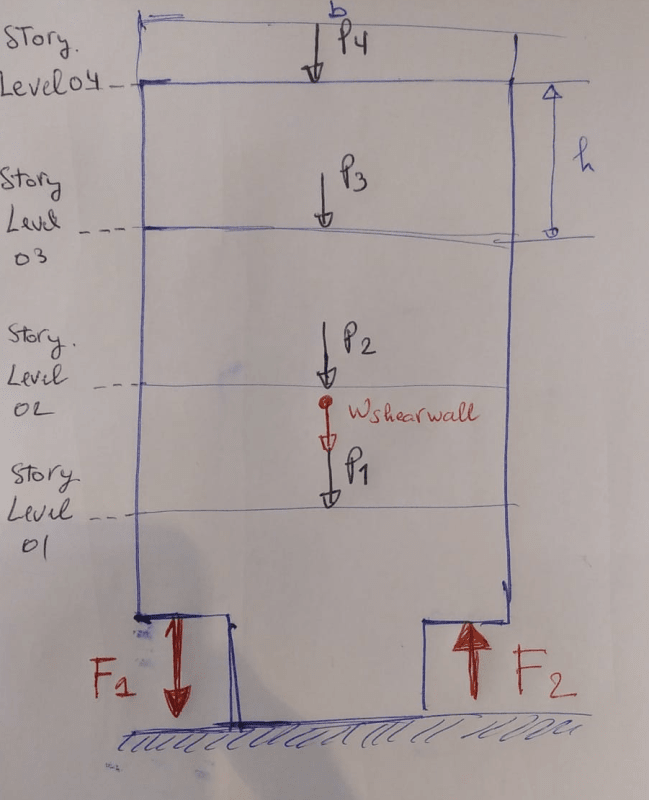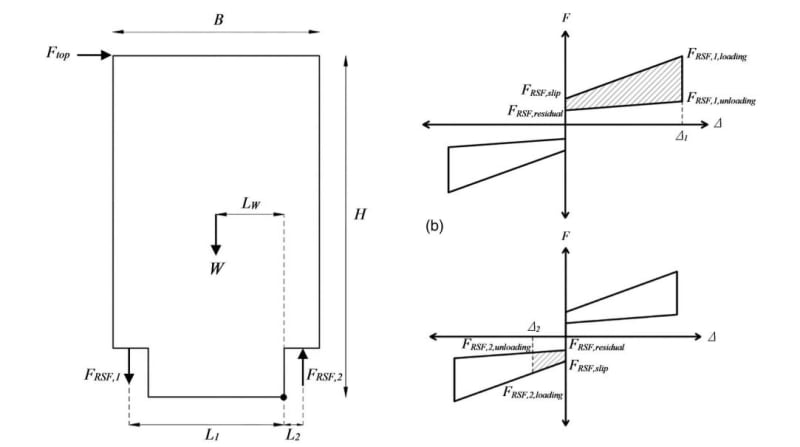Respected All,
Hope you are doing well,
I wanted to design a shear wall which has a springs at its base , However for the sake of the simplicity, I just extract the highest force which may the springs apply on the shear wall , the next figure shows the FBD of the shear wall :

Where,
P1,P2,P3,P4: are the gravity load carried by the shear wall coming from the slab.
Wshearwall: Self Weight of the shear wall.
F1 and F2 : are the forces applied by the springs where the F1 is the tension force and F2 is a compression force.
For the design of the conventional shear wall, I was extracting the forces (P,V,M) acting on each story level (by using the option in sap2000 'Section cut-out') and carry out a hand calculation to design the shear wall.
Since I have two concentrated forces at the base ( F1 and F2 ) in addition to the gravity load . Would you please help with your thoughts on how can I carry a hand calculation to design this shear wall ? or any exp which could be helpful.
Thank You,
Hope you are doing well,
I wanted to design a shear wall which has a springs at its base , However for the sake of the simplicity, I just extract the highest force which may the springs apply on the shear wall , the next figure shows the FBD of the shear wall :

Where,
P1,P2,P3,P4: are the gravity load carried by the shear wall coming from the slab.
Wshearwall: Self Weight of the shear wall.
F1 and F2 : are the forces applied by the springs where the F1 is the tension force and F2 is a compression force.
For the design of the conventional shear wall, I was extracting the forces (P,V,M) acting on each story level (by using the option in sap2000 'Section cut-out') and carry out a hand calculation to design the shear wall.
Since I have two concentrated forces at the base ( F1 and F2 ) in addition to the gravity load . Would you please help with your thoughts on how can I carry a hand calculation to design this shear wall ? or any exp which could be helpful.
Thank You,

